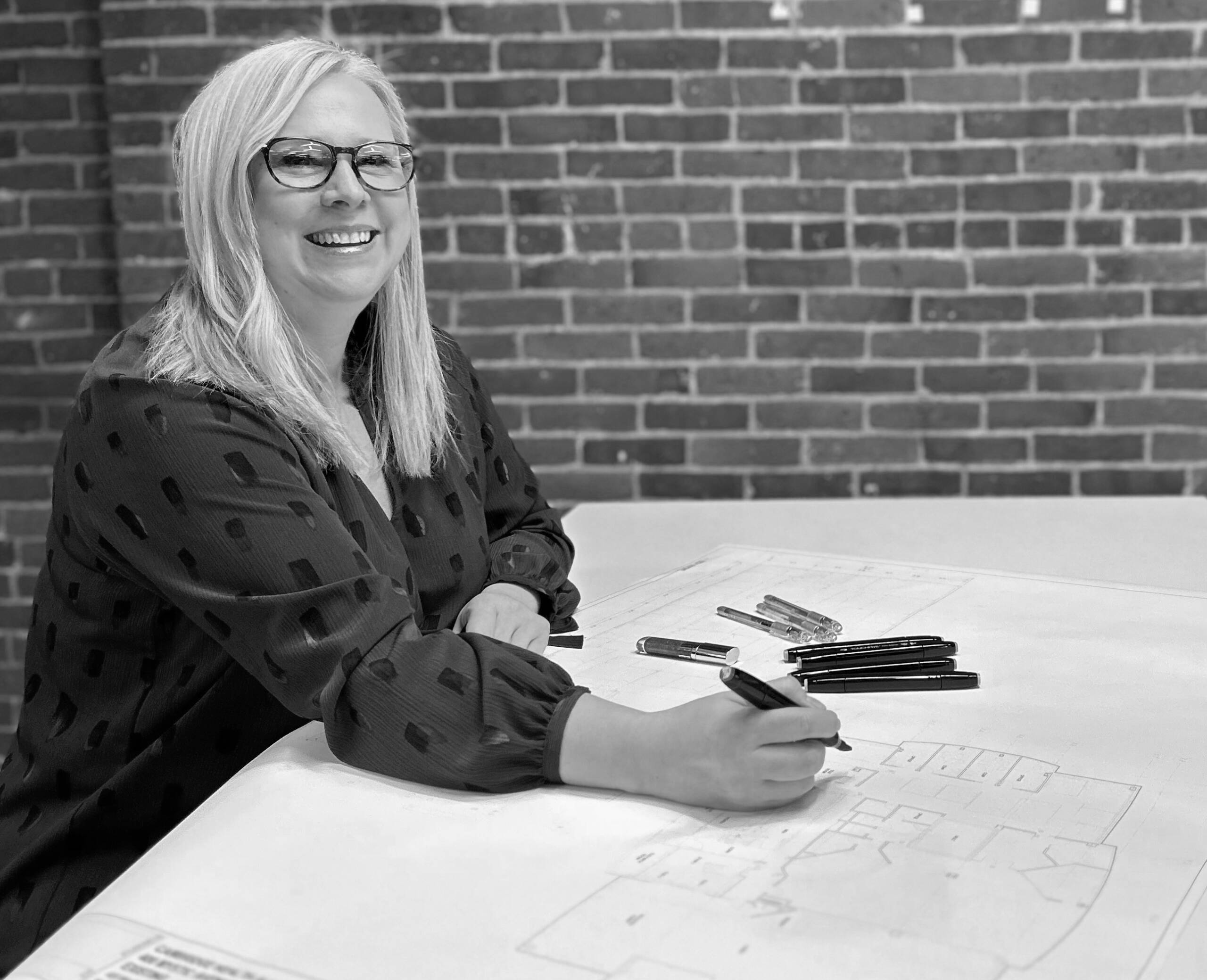Women’s History Month – 10Qs with Partner Candice Barter
posted March 30th, 2023 in 4wrd
#4wrd #leadership #womenshistorymonth
Share

Women’s History Month comes to a close as we celebrate our women leaders at E4H. We are proud that our firm is 50% women in an industry that is predominantly male. We find inspiration from Partner Candice Barter, AIA, NCARB, EDAC, who shares her path to healthcare architecture and leadership.
“I have great hopes that in 5 years we have more inclusive healthcare for both mental and physical health and we are designing spaces to treat the whole patient while also considering how to take care of the staff.”
Partner Candice Barter leads and collaborates on a wide array of complex healthcare projects, including specialized pediatric designs and academic healthcare centers. She is based in the Boston office.
1. Where did you grow up?
A small town in Pennsylvania – I moved to Boston to attend college and never left. I prefer the city and the diversity that it has brought into my life.
2. How did you get into design?
I was an art student who wanted to be able to make a living. I started off in design as a major that involved a lot of art, but still seemed pragmatic and I fell in love with architecture and designing space.
3. Who influenced you?
When it comes to healthcare architecture – nothing has influenced me more than my daughters and being a mom. I stepped away from my career for seven years when my daughters were born. During that time, I was raising a daughter who interacted a lot with the healthcare system and Boston Children’s Hospital. Out of that, a love of healthcare design – especially for pediatrics was born. I also believe that the skills I learned and honed being a mom have made me a more empathetic designer and leader.
4. Why healthcare architecture?
I love that I have to learn so much in order to design a healthcare space – what are the human needs that will need to be met? How are those procedures done? How does that piece of equipment work? The field of healthcare is constantly changing through technology and clinical innovations – and we get to play a small part in that, by ensuring that our space adapts to those changes. It is extremely fulfilling.
5. What inspires you?
I am inspired by the people that I work with – from clients who are doing their best with limited resources to a team who I learn from and mentor on a daily basis. I also have an amazing group of industry partners who have become friends – watching them do their best and become leaders in their firms and their fields inspires me to do better.
6. What advice can you give young designers?
Find a firm that encourages learning and values your voice. It’s important to meet regularly with staff to ensure that we are helping their career development as much as they are helping us deliver successful projects for our clients. Just because someone is young or an emerging professional doesn’t nullify their contributions – great ideas can come from anywhere!
7. Most memorable project?
The most memorable projects are always the most complicated ones! The layers of complexity of a project challenge us to be our very best selves and result in better design. These tend to be the ones where the team really must come together and use the best ideas from everyone on the team to solve the problem. That collaboration is truly amazing to be a part of.
8. What is your favorite part of the design process?
I really enjoy programming – working with the client to understand how they work and how their space is helping and hindering them. Watching the aha moments of the users when they think about how their space could help them spend more time with a patient or improve reimbursement rates is always a fun part of the process. Much of that happens before an architect even starts drawing.
9. Where do you see healthcare design in 5 years?
I have great hopes that in 5 years we have more inclusive healthcare for both mental and physical health and we are designing spaces to treat the whole patient while also considering how to take care of the staff.
10. How do you unplug?
I cook while listening to true crime podcasts! Trying a new recipe while listening to a description of how an investigation unfolded has a calming effect on me.